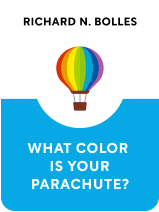

This article is an excerpt from the Shortform book guide to "What Color Is Your Parachute?" by Richard N. Bolles. Shortform has the world's best summaries and analyses of books you should be reading.
Like this article? Sign up for a free trial here .
What are bridge-people? How are bridge-people the key to getting the job of your dreams?
A bridge-person is someone that connects you to another person or organization. When you’re researching jobs or companies you want to work for, bridge-people can make the introductions you need.
Keep reading to better understand bridge-people.
Using Your Flower Diagram
There’s a five-step process to using your flower diagram, and many of the steps will involve informational interviewing.
Informational Interviewing Using Bridge-People
Information interviewing involves talking to people who work in fields, for companies, or at jobs you think you might be interested in.
The best way to find someone to interview is via a “bridge-person.” A bridge person is someone you know who has a connection to a person or organization you’re interested in. To find bridge-people:
- Talk to people you already know and ask them if they know anyone who works in a certain field, for a certain company, and so on.
- Join and participate in online groups and forums. You’ll meet people in a particular field, and companies sometimes keep an eye on these groups too.
- Look for connections on LinkedIn. If you’re trying to get in touch with someone who works at a specific company, go to the company’s page on LinkedIn and look at who works for them and is already in your network, who went to the same school as you, or who was hired or left for an organization you have a connection with. You can also advertise that you’re looking for a bridge-person on LinkedIn.
Research Specific Companies
Researching companies is very important. You do this for two reasons: 1) to learn about an organization’s culture, working style, mission, and how you can be an asset to them, and 2) to determine if you would like working for that company. (Most people don’t find out if they like a workplace until after they’ve already started working there when it’s too late to turn back.) Here’s how to conduct your research:
- Interview people who work at the organizations you’re interested in. A bridge-person is the best way to find people to talk to, but you can also:
- Use LinkedIn to find people who work at the organization and email them directly. This only sometimes works; people are busy.
- Go to the organization and ask questions. This works best for small organizations (fewer than 50 employees) who don’t have security guards. Don’t ask any questions you could have figured out on your own, for example, information you could have read on their website. Talk to the gateway people, such as the receptionist, before approaching others who are higher in the organization, talk to subordinates rather than the boss, and don’t try to get yourself hired. You’re simply gathering information.
Exercise: Find Bridge-People
A bridge-person is someone you know who also knows people or organizations you’re interested in.
—-
Think of a job you might like to do. Who do you already know who might know someone else who’s doing the job, who works with a company who hires for the job, or who is an expert in the field?
What online groups and forums could you join to connect with bridge-people? Consider industry-specific groups, alumni groups, geographical groups, and so on.
Look through your connections and network on LinkedIn. Who could you approach about acting as a bridge-person?

———End of Preview———
Like what you just read? Read the rest of the world's best book summary and analysis of Richard N. Bolles's "What Color Is Your Parachute?" at Shortform .
Here's what you'll find in our full What Color Is Your Parachute? summary :
- How to not just find a job, but find a job you love
- Why traditional resumes don’t find you the right job
- The 7 steps to identifying your ideal career






